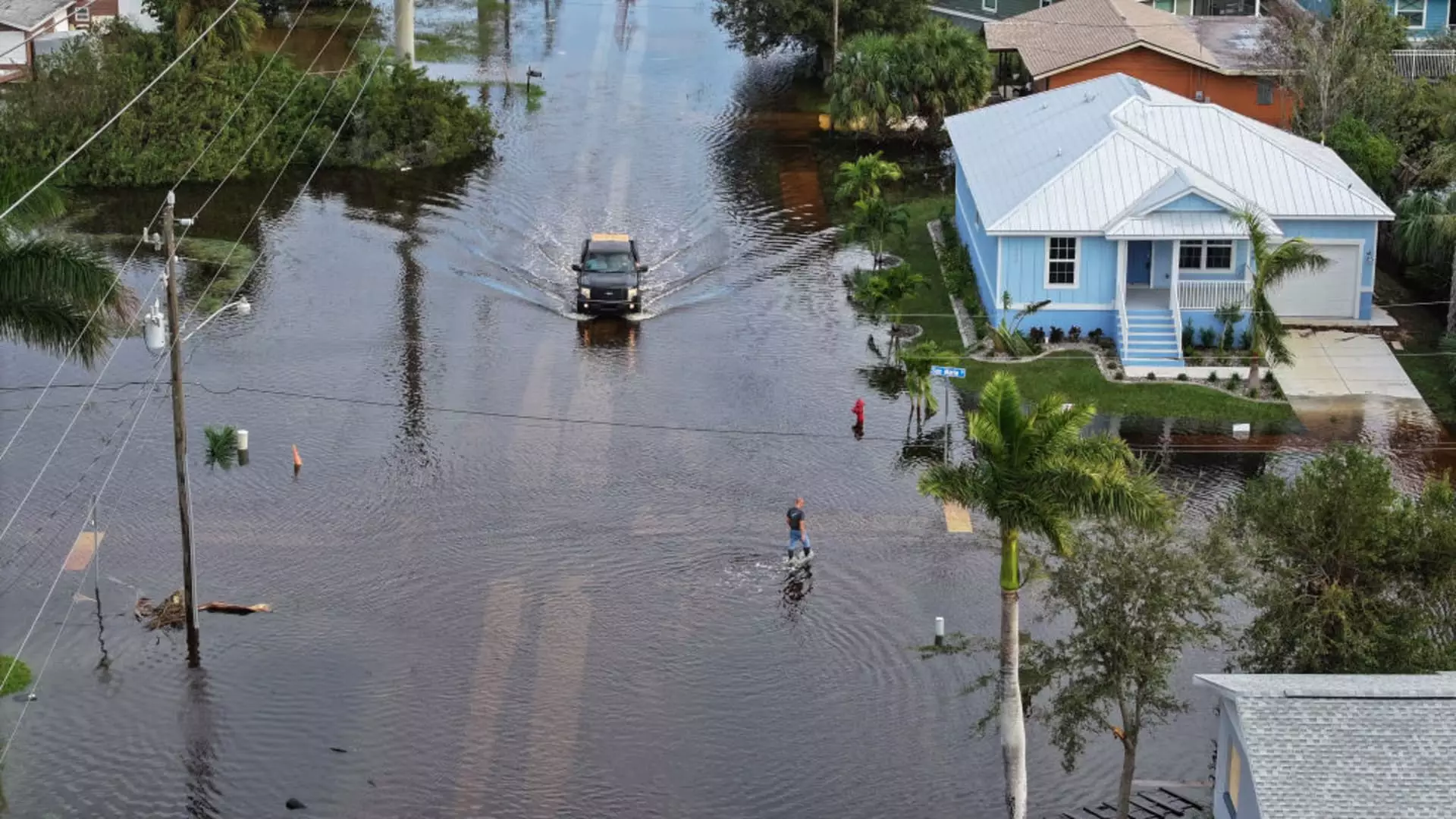As we dive into another hurricane season, the looming threat is palpable. With the National Oceanic and Atmospheric Administration (NOAA) predicting a staggering 60% chance of an “above-normal” hurricane activity, it’s crucial to confront the daunting reality head-on. The forthcoming months, extending from June 1 to November 30, could witness between 13 and 19 named storms, some escalating into catastrophic hurricanes that may wreak havoc across communities. This isn’t just a worry for coastal residents; it’s a call to action for everyone to reassess their preparedness, especially concerning homeowners insurance.
There’s a harsh lesson to be learned from the past—last year’s season alone generated over $500 billion in damages, positioning it among the most devastating in recorded history. This fiscal disaster illustrates the need for a proactive mindset. Ken Graham, director of NOAA’s National Weather Service, has underscored the importance of preemptive action, advocating for individuals to gather supplies and evaluate their insurance policies. Ignoring these guidelines could lead to dire consequences.
Your Insurance Policy: The Lifeline You Can’t Ignore
In the face of uncertainty, homeowners must prioritize an urgent review of their insurance policies. Charles Nyce, a noted expert in risk management and insurance, emphasizes that being “prepared physically” is insufficient if your policy is lacking. Homeowners need to be intimately familiar with the value of their property at risk, the potential costs of loss, and whether their coverage includes flooding.
Every homeowner must grasp the crucial point about the coverage limits stated in their policies—these limits represent the maximum compensation an insurer will provide for a covered loss. In a climate where construction costs are soaring, neglecting this aspect could lead to being underinsured. According to Nyce, if a homeowner fails to regularly update their policy to reflect rising construction costs, they could find themselves in the precarious position of not being able to rebuild after a disaster.
Building costs have surged dramatically, an alarm bell that cannot go unheeded. The American Property Casualty Insurance Association reported that the expenses associated with construction labor have escalated by over 36% in the past five years, while material costs have viewed a dramatic 42.7% increase. Homeowners should not only ensure their coverage aligns with current market rates but also remain vigilant about undergoing an annual policy review.
Navigating Deductibles and Comprehensive Coverage
Homeowners often take a cavalier approach toward deductibles; a troubling oversight in the face of unforeseen disasters. For instance, increasing your deductible might lower your premium, but it’s essential to retain enough liquidity to address the out-of-pocket costs that will arise when disaster strikes. As Bob Passmore states, this is something vital to consider: if your home sustains significant damage, understanding what you’ll need to pay upfront could mean the difference between recovery and financial ruin.
Moreover, specialized provisions, like wind deductibles, often accompany hurricane policies. Homeowners might be astonished to discover that a 2% wind deductible could pile on hefty expenses during a disaster. This fine print should be scrutinized meticulously. A catastrophic storm necessitates a nuanced understanding of one’s insurance to avoid tragic financial repercussions.
Furthermore, the housing market’s continued volatility, particularly regarding flooding coverage, is a subject that cannot be sidestepped. Standard homeowners insurance is notoriously silent on flood damage. FEMA’s statistics reveal that flooding accounts for a staggering 90% of U.S. disaster damages. Thus, requiring separate flood coverage isn’t merely advisable; it’s essential.
Flood Insurance: An Indispensable Safeguard
Homeowners are often left awestruck by the reality that flood insurance isn’t just a luxury—it’s a necessity. The National Flood Insurance Program (NFIP) offers essential coverage, yet less than 1% of households in flood-prone areas are insured against inevitable flood damages. This lack of preparedness is not just bewildering; it is reckless. Individuals must be aware of the long waiting periods before flood insurance becomes active. According to Nyce, waiting until the storm is on the radar is futile—we must buy insurance now.
Policies through the NFIP generally cover a maximum of $250,000 for property damage and $100,000 for contents, a number that may not suffice in the event of catastrophic damage. If homeowners anticipate substantial damage, it’s worth consulting with agents about excess private flood insurance options that go beyond NFIP coverage.
The reality is stark: now is the time to take decisive action. Managing risk is no longer an afterthought; it must be a primary focus. By evaluating home insurance, homeowners can position themselves to weather the storm, not just physically, but financially as well. The impending hurricane season brings with it the potential for devastation—but it also provides ample opportunity for preparation. Don’t let yourself be caught unawares.

